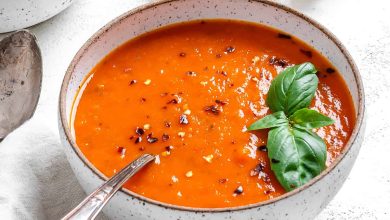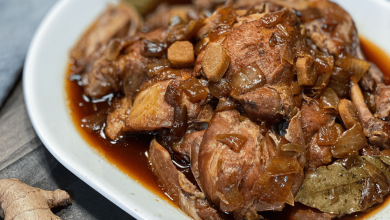Asian Pork
🥢 Asian Pork: A Culinary Delight 🥢
Asian Pork is a delectable dish that offers a mouthwatering blend of flavors and textures. This dish, like many Asian culinary creations, is characterized by a harmonious combination of sweet, savory, and often spicy elements. Let’s dive into the history, components, preparation steps, and time needed to savor this delightful dish!
📜 History:
The roots of Asian Pork can be traced back to various Asian cuisines, such as Chinese, Vietnamese, Thai, and Korean. Pork is a commonly used meat in these regions, and it has been a staple for centuries. The techniques for marinating and cooking pork have evolved over time, resulting in the diverse and flavorful range of Asian Pork dishes we enjoy today.
🥘 Components:
The key components of Asian Pork dishes typically include:
- Pork: Choose cuts like pork loin, tenderloin, or shoulder for their tenderness and flavor.
- Marinade: A mixture of soy sauce, ginger, garlic, honey, or brown sugar, and sometimes Asian spices like five-spice powder.
- Vegetables: Common additions are bell peppers, onions, scallions, and broccoli.
- Sauces: Often, you’ll find soy sauce, oyster sauce, hoisin sauce, or chili garlic sauce to create the signature sauce.
👩🍳 Preparation Steps:
Here’s a simplified guide to preparing a basic Asian Pork stir-fry:
-
Marinate the Pork:
- Slice the pork into thin strips.
- Combine soy sauce, minced garlic, ginger, and a sweetener like honey or brown sugar in a bowl.
- Add the pork strips to the marinade and refrigerate for 20-30 minutes.
-
Stir-Fry:
- Heat a wok or a large skillet over high heat.
- Add a bit of oil and stir-fry the marinated pork until it’s browned and cooked through. Remove from the pan and set aside.
-
Vegetables:
- In the same pan, add more oil if needed.
- Stir-fry your choice of vegetables until they’re tender yet crisp.
-
Sauce:
- Combine soy sauce, oyster sauce, and other desired sauces.
- Pour the sauce over the stir-fried vegetables and pork, letting it thicken.
-
Combine:
- Return the cooked pork to the pan and toss everything together until it’s evenly coated with the sauce.
-
Serve:
- Serve hot over rice or noodles, garnished with chopped scallions, sesame seeds, or crushed red pepper flakes for extra flair.
⏱️ Time Needed:
The time required to prepare Asian Pork depends on your cooking skills and the specific recipe. On average, you can expect to spend about 30-45 minutes from start to finish. The marinating process can take an additional 20-30 minutes. So, plan for a total time of about 50-75 minutes to create a delicious Asian Pork dish.
🍽️ Now, you’re ready to enjoy your homemade Asian Pork, bursting with flavors and rich history! Bon appétit! 🍲🥢
Certainly! Here are some general nutrition facts and health information for Asian Pork, keeping in mind that the exact values may vary depending on the specific recipe and ingredients used:
Nutrition Facts (per serving):
- Calories: Approximately 250-350 calories per 3-4 oz serving of cooked Asian Pork.
- Protein: A typical serving provides around 20-25 grams of protein.
- Carbohydrates: Expect about 15-20 grams of carbohydrates, primarily from the sauce and vegetables.
- Fat: Asian Pork is relatively low in fat, with roughly 10-15 grams per serving.
- Sodium: The sodium content can vary based on the soy sauce and other seasonings, but it’s generally a moderately salty dish.
- Fiber: There is minimal fiber in this dish, usually less than 2 grams.
Health Information:
- Protein: Pork is a good source of high-quality protein, which is essential for muscle growth and repair.
- Vitamins and Minerals: Depending on the vegetable choices, Asian Pork can be a source of vitamins like vitamin C, A, and minerals like potassium.
- Sodium Content: Be mindful of the sodium content, as soy sauce and some sauces can be high in salt. Consider using low-sodium soy sauce if you’re watching your sodium intake.
- Sugars: The sweetness in Asian Pork often comes from added sugars (like honey or brown sugar). Be cautious if you are monitoring sugar intake.
As with any dish, the nutritional content can be adjusted based on your preferences and dietary needs. If you’re looking for a healthier version, consider using lean cuts of pork, reducing the sugar content in the sauce, and adding more vegetables for added fiber and nutrients.
Remember, it’s essential to enjoy Asian Pork in moderation as part of a balanced diet. It can be a flavorful and satisfying meal when prepared mindfully.








